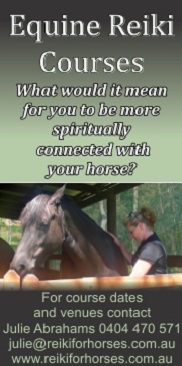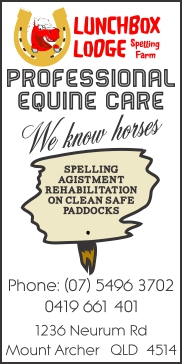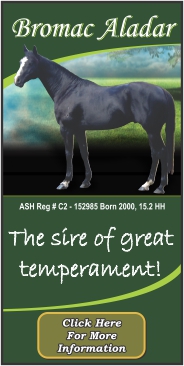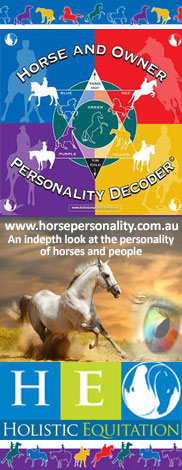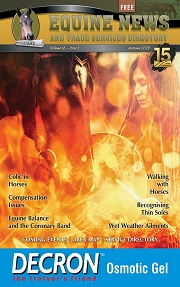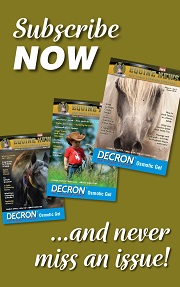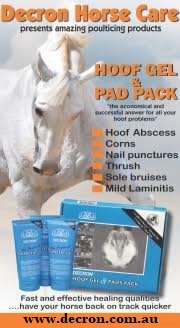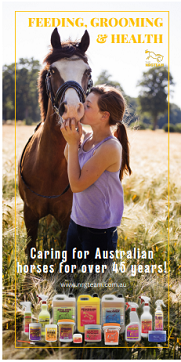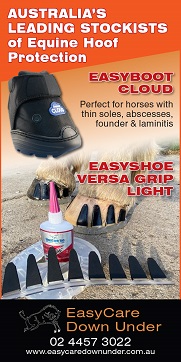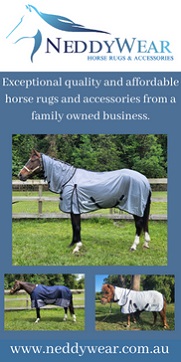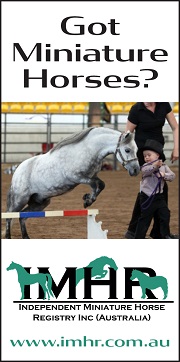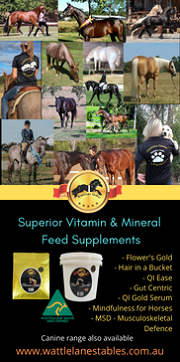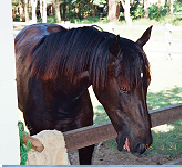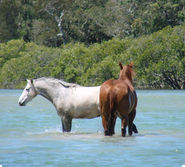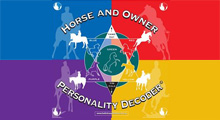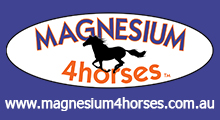About the WHSA
 The Waler Horse Society of Australia Inc. was established in 1986 in memory of the soldiers that fought for our freedom and to honour the horses that carried them. In 1989 the first horses were recorded in a Waler Horse Studbook to ensure the recognition and preservation of this uniquely Australian breed once known only as a type which has become an integral part of Australian History. Soon after the society began, it was established by foundation members that a number of the properties from where horses were being culled were actually old remount properties which had maintained the original breed lines of horses used in the various wars but by 1946 the need for remounts was phasing out and the export trade drastically reduced. After the horse trade to India came to a standstill in the 1960’s, Walers ceased to be commercially bred and many were simply abandoned to run wild on outback stations and breeding in other parts of Australia was scaled down.
The Waler Horse Society of Australia Inc. was established in 1986 in memory of the soldiers that fought for our freedom and to honour the horses that carried them. In 1989 the first horses were recorded in a Waler Horse Studbook to ensure the recognition and preservation of this uniquely Australian breed once known only as a type which has become an integral part of Australian History. Soon after the society began, it was established by foundation members that a number of the properties from where horses were being culled were actually old remount properties which had maintained the original breed lines of horses used in the various wars but by 1946 the need for remounts was phasing out and the export trade drastically reduced. After the horse trade to India came to a standstill in the 1960’s, Walers ceased to be commercially bred and many were simply abandoned to run wild on outback stations and breeding in other parts of Australia was scaled down.
 Walers running wild on these outback properties, those horses descendant of remounts became the chief source of retaining and re-establishing Australian horses, not as a type, but as a breed with over two hundred years of breeding. The crusade to save these horses became the work of The Waler Horse Society of Australia Inc, its aim to procure enough of the horses from these old bloodlines to begin a Studbook for the Waler horses. This happened at a crucial time, for the eradication of all feral animals was well under way (Government decreed) and another five years would indeed have seen the extinction of the Waler as they have probably all gone from the bush
Walers running wild on these outback properties, those horses descendant of remounts became the chief source of retaining and re-establishing Australian horses, not as a type, but as a breed with over two hundred years of breeding. The crusade to save these horses became the work of The Waler Horse Society of Australia Inc, its aim to procure enough of the horses from these old bloodlines to begin a Studbook for the Waler horses. This happened at a crucial time, for the eradication of all feral animals was well under way (Government decreed) and another five years would indeed have seen the extinction of the Waler as they have probably all gone from the bush
During the initial years of the WHSA it was only through the tireless, dedicated and costly efforts of early members that several truckloads of Walers were saved from eradication and relocated to securer homes throughout Australia which has developed to form the basis of our breeding stock today.
From the mid 1940’s no new blood, that is no other breeds, were crossed to these existing Walers. Therefore, all Walers today must be from bloodlines that came to Australia before 1945. Horses that are crossed with any other breeds arriving after 1945 will be registered as Part Bred Walers. This has been done to ensure that the breed has an uncompromising future and legendary Waler horses can live on.
In subsequent years Members have joined from all States within Australia , becoming a devoted group of enthusiastic people committed to the wellbeing and breeding of Walers. With the establishment of a Studbook, this Australian horse faces a bright future with members actively involved in demonstrating its talent, versatility and beneficial contribution to the equine world.
Historical Background
The Development of Australia’s Own Horse – the Waler
 Horses first arrived in Australia with the First Fleet in 1788. They were picked up in Cape Town, South Africa together with other livestock and supplies needed for the new Colony. It is believed the breed of horse was the Cape Horse or Barb, they consisted of one stallion, a colt, three mares and two fillies which travelled to Australia on the ship “Lady Penrhyn”.
Horses first arrived in Australia with the First Fleet in 1788. They were picked up in Cape Town, South Africa together with other livestock and supplies needed for the new Colony. It is believed the breed of horse was the Cape Horse or Barb, they consisted of one stallion, a colt, three mares and two fillies which travelled to Australia on the ship “Lady Penrhyn”.
Over the next years, horses arrived on many of the ships coming to the colony of New South Wales as it was soon realized the importance horses were going to have in the development of this remote and vast continent.
Horses thrived on the native grasses and became hardy living out on the open range, surpassing all expectations. From early days breeding good horses became a priority for the Government and some of the free settlers. The colony was expanding and it became necessary that draft breeds to work the land, coaching breeds to move new settlers over the great distances be introduced as well as good riding horses and ponies. A number of marines and free settlers took up the challenge to be involved in horse breeding on the large tracts of land offered by the Government. Because of the expense involved in shipping horses to the colony plus the long sea voyage only strong good quality horses survived to arrive safely in their new home.
Some of the breeds to arrive over the years included Thoroughbred, Arab, Suffolk Punch, Clydesdale, Shire, Cleveland Bay, Welsh Cob, Coaching breeds, Hackney, Percheron, Timor Pony and many of the British native ponies.
Horse owners began mixing many of the breeds in an attempt to come up with a strong versatile horse that could fill the bill as a riding horse, cart horse, coach horse and to be put into the plough when needed. A wonderful uniquely Australian horse, which became known as The Waler, evolved – a horse capable of fulfilling all these roles and soon to be sought around the country and subsequently in many other parts of the world.
 Because horse breeding was widely successful it was soon realized there was a ready market available with the British army in India , always in need of remounts for their Calvary and for private use. The first shipment of Australian horses left Sydney Cove in 1816 for a private sale to a British family in India . This trade of horses to private owners continued until it became noted around the mid 1830’s by the British army that these horses had the attributes needed for remounts; strong bone, athleticism, courage, intelligence, versatility, excellent temperament, a good riding horse. The lucrative remount trade to India began.
Because horse breeding was widely successful it was soon realized there was a ready market available with the British army in India , always in need of remounts for their Calvary and for private use. The first shipment of Australian horses left Sydney Cove in 1816 for a private sale to a British family in India . This trade of horses to private owners continued until it became noted around the mid 1830’s by the British army that these horses had the attributes needed for remounts; strong bone, athleticism, courage, intelligence, versatility, excellent temperament, a good riding horse. The lucrative remount trade to India began.
By mid-1840 there was a steady flow of horses leaving our shores for the British Army in India as remounts and eventually into countries of South East Asia and the Pacific. This trade would continue up until the 1960’s and would see well over half a million horses leaving this country as remounts for armies around the world.
The four types of remount horses sought from Australia included:
• Artillery horse – heavy type with more draft influence used for pulling the gun carriage and carrying ammunition;
• Officers horse – light type with more Thoroughbred influence;
•  Troopers horse – stocky type, versatile, strong and fast with some draft influence used for carrying a Trooper and his equipment, often weighing upwards of 130kg; and
Troopers horse – stocky type, versatile, strong and fast with some draft influence used for carrying a Trooper and his equipment, often weighing upwards of 130kg; and
• Scout horse – agile pony type used for relaying messages, polo and sporting.
When this Australian utility horse, or bush horse, left Australian shores for India around the 1840’s they became known in India as the “Waler horse” a nickname given to horses arriving from the Colony of New South Wales.
Many of the local princes in India began to seek them for their own private armies, also as sporting and carriage horses. By the 1860’s they were known as the finest Cavalry horses in the world with their courage and stamina unsurpassed.
In 1898 when the Boer War broke out Australia was ready to send men and horses to fight for Queen and country. These colonials as mounted infantry were known as a wild undisciplined lot who could ride and shoot with exceptional skill. The horses were often treated badly as they were put into battle as soon as they arrived on South African shores, instead of giving them the opportunity to acclimatize and have sufficient rest after a gruelling sea voyage. Despite this the horses and their Australian bushman army did themselves proud as they could work alone or work as a team with uncanny navigational skills.
 During the time of the “Great War” 1914-18, once again Australia ‘s finest men and horses were to prove themselves in the desert sands of Northern Africa against the German and Turkish war machine, this time as the Australian Light Horse. The Australian Light Horse with their New Zealand counter-parts, formed a mounted Infantry Brigade which became known as the famous “Desert Column” – a fighting force that was to become a legend for its courage and horsemanship where it fought the Turkish army in its own playing field and triumphed.
During the time of the “Great War” 1914-18, once again Australia ‘s finest men and horses were to prove themselves in the desert sands of Northern Africa against the German and Turkish war machine, this time as the Australian Light Horse. The Australian Light Horse with their New Zealand counter-parts, formed a mounted Infantry Brigade which became known as the famous “Desert Column” – a fighting force that was to become a legend for its courage and horsemanship where it fought the Turkish army in its own playing field and triumphed.
Poems, books and feature films have been made and written about these men and their wonderful Waler horses that stir our national pride. None greater than the last great cavalry charge in history when the Australian Light Horse, after riding in the hot desert sand for two days and a night, was given the order by Lieutenant-General Chauvel to take the wells of Beersheba. To do that, they had to charge over an open plain of three miles (5 km) against the Turkish cannons, machine guns and the German bombs being dropped from overhead planes.
All day the allies had tried unsuccessfully to penetrate the enemy lines. At this time close to sunset, as a last resort the Australian Light Horse Regiment was called upon to try something so out of the ordinary that the Turks were taken by surprise. The Australian Light Horse was mounted infantry. Normally they rode in sections of four, three dismounting to become foot soldiers and take the fight to the enemy and the fourth taking the reigns of the three horses and leading them back to safety, ready to bring them up for the men to mount when needed.
Just before sunset on the 31st October, 1917 the surprise order was given by Lieutenant-General Harry Chauvel to mount a cavalry charge against the enemy lines, and take the wells of Beersheba.
The men and horses of the Australian Light Horse lined up in formation of three long lines with their Officers in front, 800 men and horses in total, stretched across the plain facing the enemy in trenches guarding the town of Beersheba. The Light Horse began at a walk, men feeling the moment of battle upon them, itching to get into it and mix it up with old Johnny Turk. Horses were champing at the bit buzzing with anticipation and sensing the excitement of their riders. Down the line came the order to trot still holding formation, the nerves built at what they were about to do dawned on them. The formation reached the point where the Turks expected the order for dismount, holding their fire until the last. Instead, the order was given, “Charge” at the gallop, bayonets drawn, men screaming like banshees with the blood lust of battle. Charging down on an enemy caught so off guard they did not adjust the sight of their rifles or lower the guns. The Light Horse were out numbered 3 to 1, the order had been to secure the wells before nightfall so that the allied army, men and horses could have the water they needed to continue, without these wells the allied army would know defeat.
Against all odds these brave men and horses secured the wells, over 100,000 allied men and horses quenched their thirst that night. This is the legend of Beersheba and the men of the Australian Light Horse and their much-loved Walers.
 For three long years the battles raged in the desert and the Light Horse was there when the allied forces triumphed and the battle in northern Africa was won. Many of the Light Horsemen and their courageous horses continued on, going with the men to the battle fields of France where the allied army were battling the Germans in mud and slush, their job to carry supplies, the wounded, the big artillery guns, and ammunition to our allied forces in this dreadful war.
For three long years the battles raged in the desert and the Light Horse was there when the allied forces triumphed and the battle in northern Africa was won. Many of the Light Horsemen and their courageous horses continued on, going with the men to the battle fields of France where the allied army were battling the Germans in mud and slush, their job to carry supplies, the wounded, the big artillery guns, and ammunition to our allied forces in this dreadful war.
At the end of the war when we were celebrating our victory and there was much jubilation the order was given that the horses would not be returning to Australian shores. The reason being the expense was too great to bring them home as well as our quarantine restrictions in Australia made it virtually impossible. Australia being a continent surrounded by water was free from many of the equine diseases found in many other countries, it was felt the chance could not be  taken to bring them back from the Middle East. This was very distressing to the men who had come to know their beloved horses as mates, they had fought this war together, relying on each other. There were 12,000 Waler horses left at the end of the War of the 160,000 that had left Australia . Some horses were too old and battle weary and the order was to shoot them for humane reasons. The soldiers were heart broken to leave their horses behind on foreign shores to a life of hardship in Egypt and felt this was not on, so many of the men defied orders and quietly shot their horse, the officers sympathetic to the action turned a blind eye. Others were bought by the Indian army and would return to India , some were purchased by the British army and British Officers and taken back to the British Isles.
taken to bring them back from the Middle East. This was very distressing to the men who had come to know their beloved horses as mates, they had fought this war together, relying on each other. There were 12,000 Waler horses left at the end of the War of the 160,000 that had left Australia . Some horses were too old and battle weary and the order was to shoot them for humane reasons. The soldiers were heart broken to leave their horses behind on foreign shores to a life of hardship in Egypt and felt this was not on, so many of the men defied orders and quietly shot their horse, the officers sympathetic to the action turned a blind eye. Others were bought by the Indian army and would return to India , some were purchased by the British army and British Officers and taken back to the British Isles.
A quote from the Time Life Books, “Australian’s at War – The Australian Light Horse “In the years ahead, the men of Beersheba would talk briefly of that magnificent and terrible action and tell of the death of mates with dry eyes and a regretful cock of the head. But for the horses that died that day, there would be a moistening of the eye and a silence of memory. As one light-horseman would say, “It was the horses that did it; those marvellous bloody horses. Where would we have been but for them?”
Where would Australia have been without their Walers? Without these hardy Australian bush horses this country would not have been developed in the way it has, they carried our pioneers to the far reaches of this vast continent.
Between the First and Second World Wars the Light horse continued as Militia units around the country. In WWII some units of soldiers and remount horses were conscripted to transport ammunition to ships for our armed forces overseas. Also North Australia Observer Unit, known as the “Nackeroos” or “Curtin’s Cowboys”, a secret army of men and horses were mobilized across our Northern coast line as a reconnaissance troop keeping watch for possible landing from the enemy. They worked in two’s and three’s often out for months on end. These men and their horses had a dangerous lonely mission to fulfil.
Another role the Waler fulfilled during the time of WWII was to carry supplies to be loaded on the ships taking them to our armed forces on the battle fields overseas as at the time fuel was short on the home front.
 Our Walers again went with our soldiers to carry supplies in New Guinea as well Java and Borneo. Their part in WWII is neither widely known nor acknowledged. During WWII there was a plan that if the Japanese Army ever came to Australia from our northern shores the Brisbane line was to take effect and the Light Horse mobilized to take on the enemy in our great out back. This did not happen and the remount horses were let loose often on crown land, in particular in northern New South Wales and Queensland.
Our Walers again went with our soldiers to carry supplies in New Guinea as well Java and Borneo. Their part in WWII is neither widely known nor acknowledged. During WWII there was a plan that if the Japanese Army ever came to Australia from our northern shores the Brisbane line was to take effect and the Light Horse mobilized to take on the enemy in our great out back. This did not happen and the remount horses were let loose often on crown land, in particular in northern New South Wales and Queensland.
We must remember these wonderful horses that are so much an integral part of our history, if not for any other reason but for the memory of the men and horses who fought for our freedom and the freedom of our children and generations to come. We need to remember the forgotten Anzac’s, Australian’s Own the Waler horse.
There are those that will say there are no Walers as only one came back after WWI, Sandy. However these sceptics forget the 900 waiting to leave our shores when peace was declared in 1918, plus the breeding stock that bred the horses, they were still on the many remount breeding properties around the country. There is evidence that the remount trade continued between Australia and India up until the mid 1960’s.
Take into account too these hardy Australian bush horses were still used extensively on the home front in the country areas as well as throughout urban Australia to cart bread, milk, ice, fresh vegetables, clothes props to our homes in our cities up the 1950’s. When petrol once again became readily available after the war, mechanization took off and the car, bus, tram and train fast became the usual form of transport. Horses were no longer needed and were considered only for pleasure riding and in the many riding schools around our cities and in the country where they were still used for stock work. However horses became mainly redundant and thousands found their way to the slaughter yards around the country. Many of these were the breeding herds of the Waler which was no longer in great demand. Others of the remount breeding stock were let loose to find their way into the brumby herds that roamed the countryside. Some station owners in vast out-back who had previously bred the horses as army remounts, as well as some small time horse breeders continued with their stock and bred the horses for station use, managing the herds keeping the old bloodline true.
 By the mid 1950 horses were no longer work horses except in the outback, in the cities they were ridden for pleasure, sporting and show horses, on the whole people wanted to have the new horses coming into the country, the more showy breeds. In the 1960’s and 1970’s, the new lines available from the Thoroughbred, Arabian, Quarter Horse, and the many American and European horse breeds now became popular and readily available. The Waler, the “plain” Australian bush horse or utility horse, once lauded as the finest cavalry horse in the world, were forgotten as having “had their day”. Not so!
By the mid 1950 horses were no longer work horses except in the outback, in the cities they were ridden for pleasure, sporting and show horses, on the whole people wanted to have the new horses coming into the country, the more showy breeds. In the 1960’s and 1970’s, the new lines available from the Thoroughbred, Arabian, Quarter Horse, and the many American and European horse breeds now became popular and readily available. The Waler, the “plain” Australian bush horse or utility horse, once lauded as the finest cavalry horse in the world, were forgotten as having “had their day”. Not so!
In 1971 there was an attempt to save the Waler by a group of horse lovers who came together in Tamworth and the Australian Stock Horse Society was formed. They began with many of the well known Sires and brood mares that had bred the Waler these were bred to the more modern breeds, developing a modern refined type of Australian horse which became known as the Australian Stock Horse.
There is a legend that tells that in the early 1980’s when HRH The Duke of Edinburgh arrived at an equestrian event in Gawler SA, he congratulated the participants on their fine horses, but ended by saying words to the effect of “where are your Walers, The finest Calvary horse in the world”. This Comment got a small number of people in different parts of the country asking the same question, ”Where are our Walers…are there any left’. At this time we were also as a country moving towards our bi-centennial year and people were anxiously rediscovering our past. We were looking for those things that had been important to the development of this country, something that was uniquely Australian, and some remembered our wonderful horses the Waler.
In 1986 it happened there were two women in Tasmania who were keen to discover whether there were any descendants of Waler horses still in that State. By chance on the radio program “Macca on a Sunday morning” they happened to hear a gentleman from the Northern Territory decrying the slaughter of horses, horses running free on stations out from Alice Springs that were being shot in cold blood from helicopters. Some of these were on stations where army remounts were bred and the breeding stock had remained. These were the direct descendants of the famous Waler remount horses, the remnant herds that had been kept free and isolated from any of the modern breeds coming into the country since 1945. These horses were unique to the Waler heritage.
The two women contacted the NT gentleman and the connection was made. One of the women travelled to Alice Springs where she was met and introduced to people who could assist in the selection of horses from these herds and the Waler Horse Society was formed to register the horses as the Foundation stock for a Waler breed society.
Numbers of horses were purchased off these properties and brought south to Victoria, Tasmania, and New South Wales, while others were taken north to Darwin. By 1988, the new society was registered with Victorian Consumer Affairs; a Stud Book and Register formally started; strict guidelines defined and the Waler as a breed founded under the rules of the “The Waler Horse Society of Australia Inc.”(WHSA) Its aim was to preserve and promote the Waler horse of Australia for future generations.
 Further research was carried out by a small number of enthusiastic Australians, and with a great deal of care it was found there were other herds of Walers on isolated properties in the Northern Territory, North-Western Australia, South Australia and far North Queensland, stations where remounts had been bred and managed for generations and the remnant of the breeding stock still remained. It was agreed that as many of these beautiful horses as possible should be obtained and brought south, before they became extinct and the old timers who knew where they could be found would no longer be with us. Since the early 90’s others would be found and carefully selected, gradually adding to the numbers of Foundation Walers over a period of years.
Further research was carried out by a small number of enthusiastic Australians, and with a great deal of care it was found there were other herds of Walers on isolated properties in the Northern Territory, North-Western Australia, South Australia and far North Queensland, stations where remounts had been bred and managed for generations and the remnant of the breeding stock still remained. It was agreed that as many of these beautiful horses as possible should be obtained and brought south, before they became extinct and the old timers who knew where they could be found would no longer be with us. Since the early 90’s others would be found and carefully selected, gradually adding to the numbers of Foundation Walers over a period of years.
Only horses and their progeny derived from the old bloodlines of isolated herds with no new bloodlines brought to Australia since 1945 and where only the best survived, can be registered with the Waler Horse Society of Australia as Walers. Since the Studbook was established horses and their generations of progeny have continued to breed true to type and have proven to retain the attributes most dear to the Waler horses of yesteryear: good conformation, good strong bone, frugality, intelligence, versatility, courage, giving of a good comfortable ride, and the most amazing temperament that gets on well with humans.
These heroes of our past have a strong future through the members of the Waler Horse Society of Australia making sure we remain true to the old bloodlines and without the necessity to recreate the Waler. Our Waler horses are an important part of our Historical Heritage and a precious Australian Icon that should be honoured as such – a true blue Aussie battler.
The WHSA Aims


The aim of the Society is to promote the breeding and preservation of this unique Australian horse.
By defining the Waler horse in the Standard of Excellence, an ideal is set for breeding programs. A Studbook and Horse Register set up by the WHSA establishes the Australian Waler Horse as a breed (as distinct from a type) following documented acceptable breeding guidelines. The Waler is classed as a Warm-blooded breed, with the breeding based on the old bloodlines of the Australian remount horses.
Since the Society was established it has successfully researched, located and classified many Walers whilst documenting the history that led to their development as a breed today. The WHSA aims to build awareness within the horse world and the wider public of the Waler heritage, their importance in Australian history and possibilities for their future.
Defining the Waler
A handsome outstanding horse showing remarkable bone and robustness, the Waler has many excellent attributes. Its jumping ability is well known and can be seen in the length of gaskin, splendid quarters and well-formed hocks. His comfort as a riding horse shows in his long ground-covering walk coming from a good, well sloped shoulder, strong back, powerful legs, big clean joints and correctly sloped pasterns, at an angle corresponding to the shoulder. His stamina and endurance are unsurpassed, his chest spaced for plenty of heart and lung room, his girth deep and his ribs well sprung. A strong head with an alert appearance, wide set kind eyes, well positioned onto a graceful but strong neck with a good length of rein. As befitting a cavalry horse, some carry their heads high, to protect the rider. His make-up originates from a diverse mix of pony, draught, coach and riding horse.
• From the pony he has gained agility and hardiness.
• From the draught, mighty bone and strength, a big gut so he can do well, broad back and magnificent hindquarters.
• From his coaching predecessors he gained good wind, hard hooves and iron legs.
• From the thoroughbred, he inherited speed, grace, courage, a good shoulder, deep girth and well-formed joints.
From his early breeding days on huge stations, and subsequent years in the wild, he has learned to survive, as few horses can, to live well and prosper on the basics and does not seek nor need the soft life.
Colouring is predominantly solid bay, chestnut, black, brown and grey. Some taffy colouring may be seen in the mane and tail. White leg and facial markings and some feathering are not uncommon however a darker colouring, skin pigment and hooves are preferred to ensure the horse remains sound, strong and minimally affected by harsh environmental conditions. His feet are tough and open, with a well defined frog, not flattened underneath to avoid stone bruising or sliding in sand and mud. Perhaps heavier than is fashionable, intelligent, versatile, with an easy flowing movement, a quiet friendly temperament that takes kindly to humans, the Waler is truly a horse for all seasons.
Walers today are categorised into one of four different types:

Even wild Walers can quickly establish rapport with humans. Walers are often slow developers, not maturing until approximately 7 years of age. They are often considered as the ugly ducklings when young, however the awkward young Waler rewards his patient owner by blooming into a strong, graceful, handsome and eye-catching horse.


Walers Today
The Waler as we pointed out was originally bred to be a working horse and today they still do stock and harness work but they are also being recognised as excellent performers in the equine sporting arena and proving to be a good horse for any horse enthusiast.
The hardy Waler with their versatility, intelligence, speed and stamina make them very competitive in all forms of equine sport including Endurance, Dressage, Eventing, Show Jumping, Cutting, Roping and Pony Club.
For those not wanting to compete, Walers are also great for Trail Riding and Recreational/Pleasure riding due to their loyal nature and “go all day” stamina. Those of us fortunate enough to own a Waler find they have the true Aussie spirit of being friendly, laid back a bit of a larrikin, a wonderful mate that will be willing to give you everything they have got and more once you have earned their trust.
Today some Foundation Walers are still brought in from the wild or off outback stations increasing the number of horses with the Waler bloodline, however the main source of Walers are to be found today on the WHSA registered Waler Studs scattered throughout Australia where quality horses can be found. The Waler is in high demand these days often selling as young as weanlings, the true Waler is not easy to find the reason being when you own a Waler you are very reluctant to part with them, so if you wish to purchase a Waler the place to look is on this WHSA website Walers For Sale page or contact the WHSA Secretary, Studbook Keeper, President or your State Co-ordinator for further information.
As the revival of the Waler breed progresses, Walers are now involved in an ever-increasing number at Agricultural Shows, Horse shows and competitions, sporting, endurance, trail riding, camp drafting, cutting and Heritage Light Horse Troops. The Waler Events page lists up and coming events and if there is one near you, do yourself a favour and come out and see Walers competing for yourself or visit one of the registered Waler studs near you.
The Waler Horse Society of Australia Inc. (WHSA) is the original Breed Society for the Waler Horse. Its basic aims are to preserve and promote the breed. The WHSA is not associated with, and does not recommend or endorse, nor necessarily recognise or acknowledge the principles or ideals of, any other Waler Registry, or Stud, or Society, or Association or Organisation claiming to breed, Register, possess, or otherwise promote the Waler horse, other than members of this Society or those parties approved by this Society. Click here for more information.








